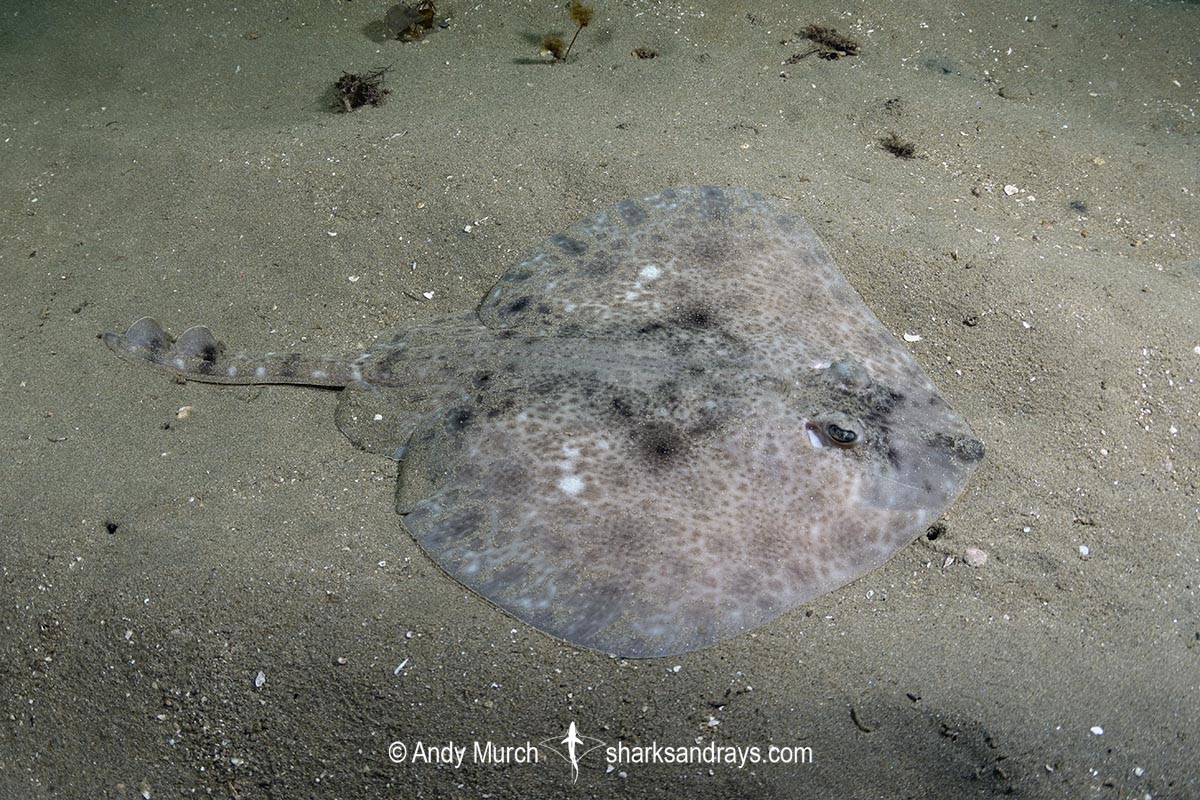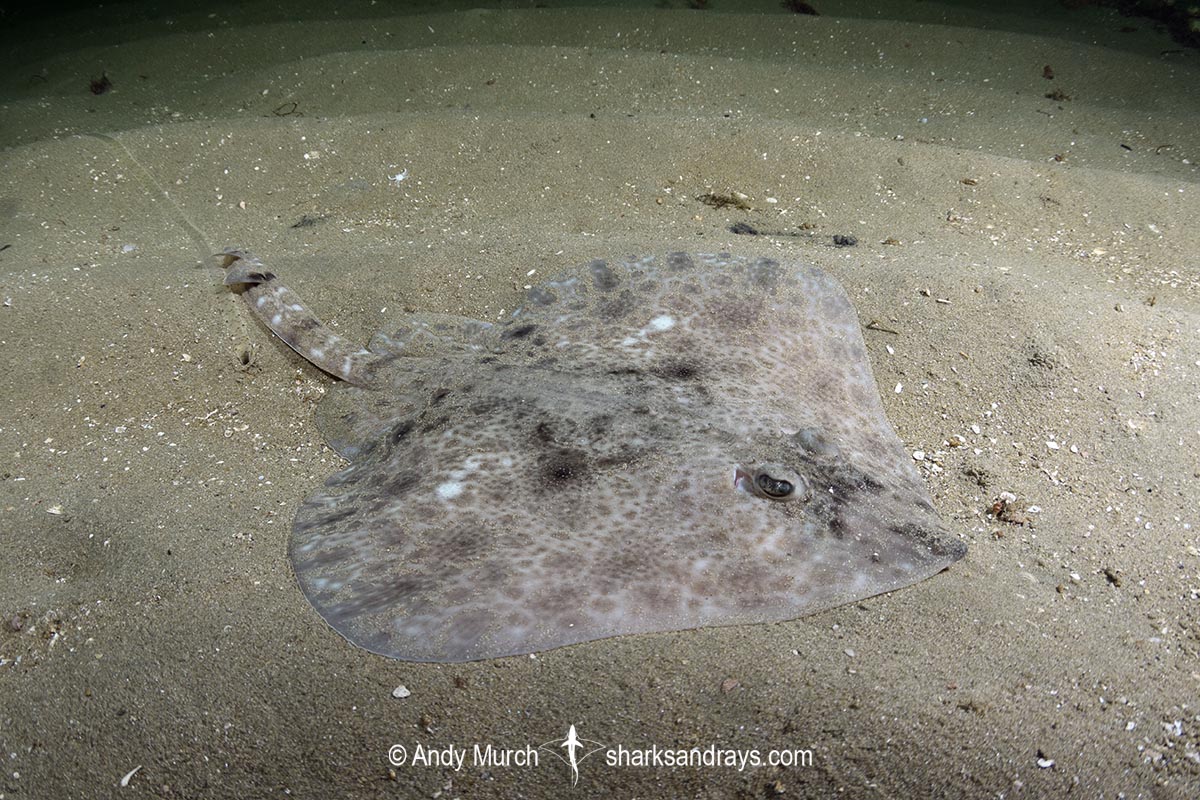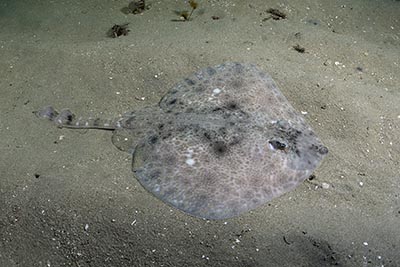Common name(s)
Australian Thornback Skate, Thornback Skate.
Accepted Binomial
Dentiraja lemprieri.
Synonyms
Identification
A medium-sized skate with a wide kite-shaped to sub-circular disc. Disc width 1.1-1.2 x disc length. Snout short and rounded or obtusely angular. Snout length 3.1-3.8 x orbit length. Anterior margins of pectoral fins weakly undulate in males, convex in females. Pectoral apices broadly rounded. Disc granular; more densely covered in adults. 6-10 thorns around eyes. Continuous row of enlarged midline thorns from nape to first dorsal. Malar and alar thorn patches present level with eyes and near pectoral apices respectively. 2-6 rows of smaller lateral thorns along tail. Ventrum smooth. Pelvic fins large. Anterior pelvic lobe much shorter than posterior lobe. Tail short, slender, and depressed with broad lateral folds near tip. Tail thorns occur in multiple staggered rows. Well developed lateral folds on tail. Dorsal fins broadly rounded. First and second dorsal closely separated or joined. Caudal fin extremely small.
Colour
Dorsum grey, or greyish-brown to black, with an intricate pattern of irregular spots that create an overall mottled appearance. Black spots sometimes form irregular dark blotch on either side of midline behind shoulder and a thin band in front of eyes. One or more irregular white ocelli often present on pectoral fins. Snout tip black dorsally. Tail weakly banded with irregular spots. Ventrum pale with a dusky snout.
Size
Maximum length at least 55cm. Length at hatching 10cm.

Conservation Status
LEAST CONCERN
The Thornback Skate (Dentiraja lemprieri) is caught as bycatch in the Eastern Scalefish and Shark Fisheries, but is discarded. It is also caught occasionally in shallow water recreational gillnet fisheries in Tasmania. Both of these fisheries only affect this species close to its maximum depth. In shallower water where most Australian thornback skates are seen, fishing pressure is relatively low. However, this species’ range is relatively small so any increased fishing activity in shallow water within the Bas Strait would be potentially catastrophic.

Habitat
Temperate seas. Demersal on silty and muddy substrates. Usually in shallow water to 40m, but recorded down to 170m.
Distribution
Southwestern Pacific Ocean. Confined to the eastern half of the Bass Strait in southeast Australia, eastward to the Murray River mouth, including Tasmania.
Reproduction
Oviparous. Egg cases are deposited on open substrates. Embryos hatch at 9.5-10.8cm after 4-5 months.
Diet
Crustaceans, octopus, and small demersal fishes.
Behavior
Often partially buries under sand and silt. Personal observation: one Australian thornback skate shot to the surface from 20m when discovered. Swam in midwater for approximately 5 minutes and then nose-dived into deep water.
Reaction to divers
Usually very docile. Generally remains motionless even when divers waft sand away from it’s back if done slowly. One Australian thornback skate bolted to the surface before a close approach was possible, but then allowed me to shadow it as it swan along in midwater.
Diving logistics
The best place to see Australian thornback skates is in the Derwent Estuary south of Hobart. Diver’s are likely to see at least one or two on shore dives at the north end of Blackman’s Bay. I have also seen this skate at Rosny Point on the east side of the Derwent Estuary.
What’s new
View our full list of updates
Similar species
Melbourne Skate This is the only other shallow water skate that divers are likely to encounter within the ATS’s range. Easily distinguishable by its more acutely angular snout, simpler, sparser markings, and much larger adult size.









